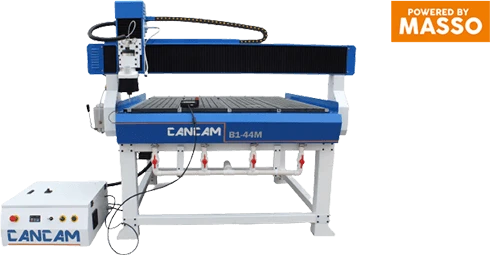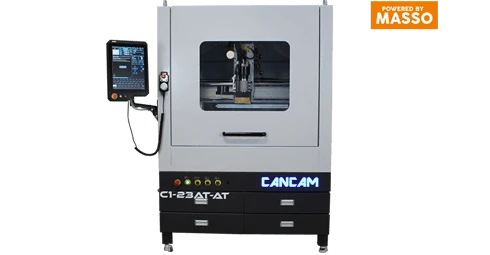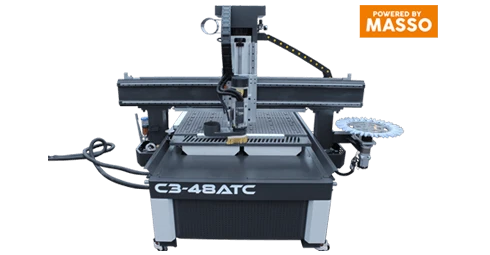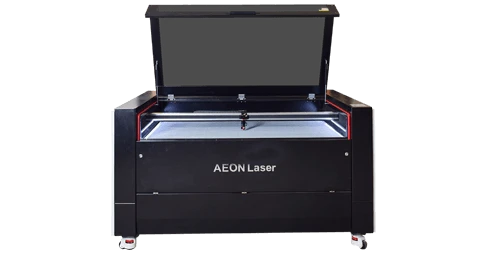Purposes of the Different Axes
CNC routers traditionally implore the 3 axis machining method which has continued to be a staple in the machining industry. This traditional axis configuration is widely used for 2 dimensional cutting with limited 3 dimensional capabilities. The focus here is on the speed, accuracy and repeatability when using the machine for the uniform fabrication of goods and products in order to increase the production of your business. Some of the common applications and industries that this caters to include: Cabinetry and furniture building, signage, automotive part production, orthotics, set designs, and engraving. With the various applications of 3 axis machines, there are still aspects of limitation that is present within this system. Adding another axis or axes increases the capabilities of your machine and allows for a wider array of uses and applications that would not be possible with a 3 axis configuration.

4 Axis
Adding a 4th axis to your machine is a generally inexpensive way to tap into 3 dimensional machining. When machining multiple faces or circular/cylindrical objects, there is difficulty when holding down the material or being able to rotate them while maintaining precision when machining with a traditional 3 axis router. There are two main types of 4th axes that can be implemented, positioning 4th axis and simultaneous interpolation. Both types have their own unique applications and can be used to explore different machining practices that may prove to be difficult or near impossible with a generic 3 axis machine.
Positioning 4th Axis
A positioning 4th axis, also known as a rotary axis, is the most common type of 4th axis. Rotary axis’ does not add an extra true degree of freedom, but rather repositions your work piece between 3 axis operations. This method is great for long cylindrical and rectangular work pieces that require machining of multiple faces. This allows for materials to be secured properly when machining while staying in a uniform position when accessing the different faces. You are limited by the size of the rotary axis and therefore does not allow for extremely large or unconventional shapes.

Simultaneous Interpolation 4th Axis
A simultaneous interpolation 4th axis is a “true” 4th axis. It adds an extra degree of freedom around the spindle which allows for rotation around the z axis (also known as a C axis rotation). Figure 3 is an illustration of this 4th axis. For this type of 4th axis, an aggregate is required and can be attached. The angle at which it machines at can be adjusted to suit the surface and the type of cut that will be needed. Many faces can machined especially for large materials that cannot fit within the range of motion for a rotary axis.


5 Axis
5 Axis machines provide a number of advantages to the deductive manufacturing processes. Not only do you have the generic directional travel that the X, Y and Z axes provide, but you also have to rotational directions that provide maximum degree of freedom. One axis rotates about the z axis and the other rotates about the y axis. This allows for true 3 dimensional deductive machining and is particularly used for prototyping. Even though 5 axis machining has immense capabilities, it is still not widely used due to the major costs that are associated with it.









